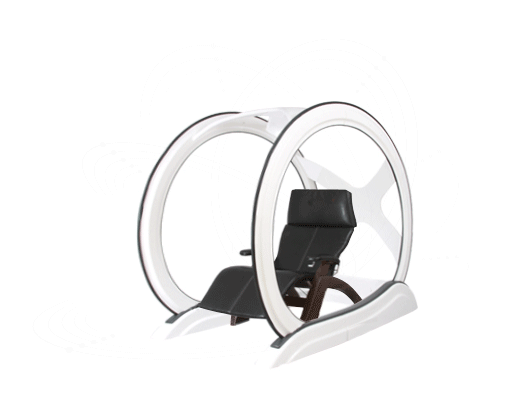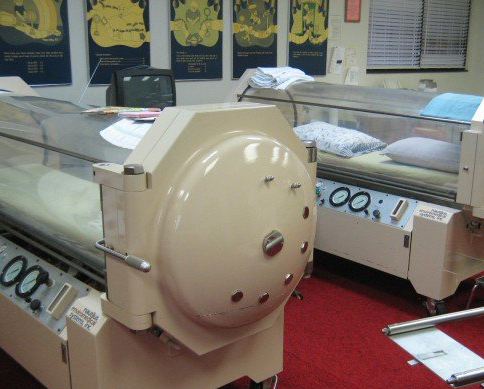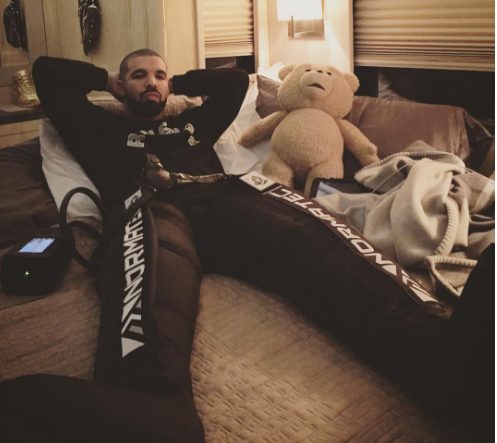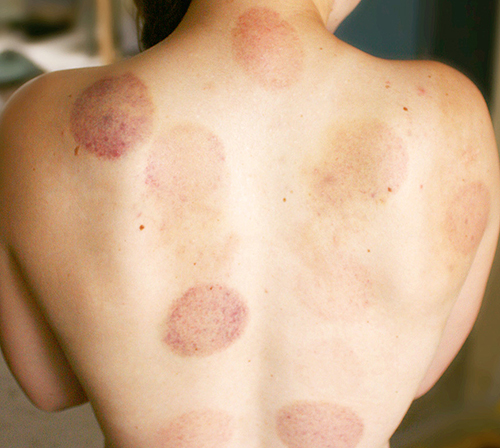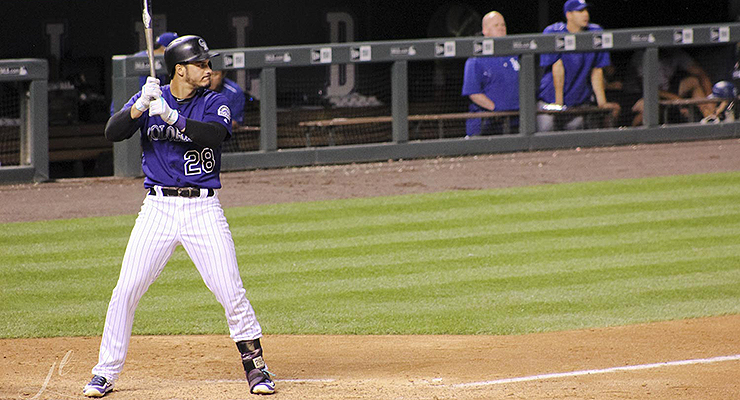
Article reposted from The Hardball Times
Author: ALISSA NOE
Arizona Diamondbacks center fielder A.J. Pollock wanted his right elbow to heal properly this time.
After surgery for the first joint fracture — which cost him the entire 2010 season — ended with the screw breaking off, Pollock said his bone never fully healed. He was able to put the injury out of his head for a few years, but a freak accident at home plate two days before Opening Day this season sent him back to the operating room.
The second time around, he embraced sports medicine methods that were ancient (cupping, needling), high tech (hyperbaric chamber) and even, well, out of this world.
“I had a big spaceship at my house that they installed that I sat in for hours at a time,” Pollock said with a bemused chuckle. Pollock’s trip through time and space helped him return in just five months.
With the daily wear and tear of spring training, the 162-game regular season and (with luck) postseason, it’s almost a miracle players can stay healthy. That miracle is called modern sports medicine, and the saints of the trade are the trainers that employ some of the simplest and strangest methods to keep the bats swinging.
Without the trainers of any major league baseball team, injuries would be more frequent and players would burn out faster. And the sports medicine that they practice and administer is always changing, always advancing.
Colorado Rockies head athletic trainer Keith Dugger, who has been working with athletes in the majors for 18 years, said that many of the treatments his staff employs circulate around manual therapy and massage. They have a wide range of innovative treatments at their disposal, and each treatment is interconnected.
“There’s a huge realm,” Dugger said. “Machines are called modalities, so there’s ultrasounds, there’s different kinds of electronic [stimulation], there’s lasers. We consider ourselves manual therapists. We do a lot of massage, soft tissue work, tissue mobility, pressure point, acupuncture before we hook up any player to any type of machine setting.”
Head athletic trainer Ken Crenshaw, in his 11th year with the D-backs, also attested to the benefits of using manipulative therapy while praising the value of the ample medical resources available. “I can’t point to one machine or, I guess, one thing that we do that stands alone,” Crenshaw said. “It’s all kind of cohesive and works with an integrated approach.”
The job of these trainers encompasses much more than simply treating the injuries of their athletes. They must also educate the players on how to better care for themselves and keep them mentally and emotionally in check when injuries go awry.
“The trainers are experts at what they do, just like we’re experts at playing baseball,” Rockies third baseman Nolan Arenado said. “You got to trust them and trust that they know what they’re doing to help you get back.”
Oddities Outside of the Typical Physical Therapy
So what is the spaceship, and how did it end up in Pollock’s house?
After doctors repaired his elbow with a new screw this season, Pollock decided he wanted full healing to reduce the risk of re-injury. He turned to his team’s training staff, who helped him install the other-worldly device in his house for more around-the-clock treatment.
The so-called “spaceship” is actually amagnesphere. Much like a magnetic resonance imaging (MRI) machine, a chair wedged between two giant, ring-like magnets creates a force field around the patient that alters the molecular structure of the injury.
Pollock also underwent treatments in ahyperbaric chamber — a glass tube into which oxygen is pumped for a full hour. Along with intensified air pressure, the oxygen being pumped into the lungs encourages the body to heal faster and circulates more blood to the affected area.
“We have a partial pressure hyperbaric unit that we have at the field,” Crenshaw said. “You can get partial pressure and partial oxygen in there. It’s not like the medical grade one, like if you’re going to a burn treatment center, you’re going to get 100 percent oxygen.”
Pollock swears by all the treatments, even if he can’t explain them. “When we started doing the X-rays and the CT scans, I mean, it was pretty obvious that things were working. I don’t know exactly what it was,” Pollock said.
Before 2016, the Rockies’ Arenado suffered through pneumonia, a broken finger and a bruised rib in the first three years of his career. By the time this September came, Arenado hadn’t missed a single 2016 game due to injury. He often finds himself using NormaTec therapy, where full-leg length massage boots implement pulsing compression that mimics the leg’s muscle pumps, shortening the recovery time after a strenuous workout.
Rockies closer Adam Ottavino, who returned from a 14-month hiatus earlier in the 2016 season, enjoys simpler treatments. After undergoing Tommy John surgery in May of 2015, the 30-year-old had an uphill battle to get himself back in tip-top shape.
“They start doing therapy with you right away,” Ottavino said. “I think they took the cast off my arm after like three days, four days, and then we started moving it. I got the stitches out a little bit after that, started doing everything that you got to do to get it back.”
During the first 10 months of his recovery, Ottavino said, the trainers took it easy on him, focusing mostly on soft-tissue work and hot and cold tub contrasting. During the last four months, they ramped up the intensity and explored more options, such as cupping and needling.
“I’m a big believer in both. I’ve been doing acupuncture since I was young, and I’ve always had positive results with it,” Ottavino said. “Cupping is something that’s relatively new in my treatment, but I find it to be very effective.”
Player- vs. Trainer-Driven Treatments
Not all treatments are administered by the athletic trainers of these teams, or at least that’s the case for the Rockies. Dugger, who oversees the treatment, said that many of his players in recent years have been taking agency over their own therapies and educating themselves about their bodily health. “I would say these new players in the last 10 years are very proactive,” Dugger said. “They’ve learned to take care of themselves — their eating habits, sleeping habits, tobacco, alcohol. They’re taking care of those factors that actually affect them. Rolling out, light stretch, soft tissue work. They understand their bodies a lot better than players did 10 years ago.”
None of that would be possible without the education that the trainers provide, even at the most basic level. Dugger said that first and foremost, he has to teach players the difference between soreness and pain, and from there he addresses any other factors that may affect their day-to-day well-being.
Once that base understanding has been acknowledged, the Rockies training staff encourages the players to explore their own avenues of treatment. Over the years, Arenado, a 25-year-old All-Star, has battled a broken finger, a chest injury and back pain, which he said he still deals with some this season. Yet he’s been healthy this year, at least in part because he takes such good care of himself.
“I’m always doing stuff — always ice pack, doing NormaTec, little things like I get massages all the time,” Arenado said. “But those are just things I have to do because it’s tough to play in altitude (at 5,280 feet), and then the fact of the matter is that we play for six months — 162 games, which is a lot of games — and it’s a wear and tear on your body.
“It’s amazing how you feel in April compared to how you feel now, and it just feels like you’re losing muscle almost because you get so tired and drained. You just try to maintain as much as you can, eat right, drink a lot of water and just do what you can to protect your muscles and protect yourself.”
Rockies catcher Nick Hundley, 32, stays healthy by using the cupping method to keep his muscles loose and ready for action. In cupping, large suction cups are applied to the skin above tight muscles, pull the skin up about an inch, and are released after a few minutes. It helps the two layers of tissue in the muscles glide more easily, releasing any tension that was present before. Cupping, as you may recall, had a bit of a moment during the Olympics, when the whole world saw the cupping marks on the body of American swimmer Michael Phelps.
“It’s the best, to go from the wincing, the tightness, to instant relief. I feel like it’s one of those things where you can feel how quickly your muscles loosen, and how good it is to feel once it comes off,” Hundley said. “If I can physically feel the same every day, it’s a huge mental and physical advantage that I can take out on the field. I feel like cupping helps me do that.”
Hundley was introduced to cupping six years ago and now believes in it so much that he has anyone and everyone around him administer the treatment as necessary, whether it’s teammate Tyler Anderson or his wife.
“All I know is my first four years in the league, I was on the DL three times, and the last six I’ve been a lot healthier. I’ve started cupping and that’s been a major factor in keeping me healthy,” Hundley said. “It’s one of those things I’ll do the rest of my professional life.”
As for the Diamondbacks, Crenshaw said he entrusts nearly all of his player treatments to his staff. “We have a really good integrated system and a team of practitioners that I think are as good as anyone, so we most of the time do it for them,” Crenshaw said. “It just works better, I think, personally. Sometimes some guys pop in and do their own stuff, but it’s pretty rare.”
Keeping the Right Mentality
Dugger and Crenshaw also have to keep their players happy and motivated during the recovery from serious injuries. That’s not always an easy task. “That’s probably one of the biggest things that I see, is when you get a player that’s missing a significant amount of time, you have to make sure mentally, he’s progressing,” Crenshaw said. “Because if they’re not thinking they’re progressing, that only sets them back from a healing standpoint.”
Dugger agreed, noting that most of the mental therapy becomes necessary when a player undergoes surgery and has to miss much if not all of the season. “The treatment starts before the surgery,” Dugger said. “You’re going to tell them, ‘Hey, you’re going to get depressed, you’re going to feel like you’re the third wheel. You’re going to have these flat-line plateaus during the rehab.’ So you kind of get that out of the way when you get to that point.”
Rockies shortstop Trevor Story knows that pain all too well. At the end of July, during his record-setting rookie season with Colorado, he tore a ligament in his left thumb sliding into second base and later diving for a ground ball in the same game.
By early this month, Story still had not reached the treatment part of his recovery. His thumb had been in a brace for four weeks with a week or two left until his therapy was supposed to begin. The lack of activity began to mess with his head. “At first, it was tough,” Story said. “It’s still tough for sure, but when you’re missing time out there with your guys—and it was during a really hot streak of ours too—it was really tough on me those first couple weeks. It just gets better the more I go.”
Dugger and his staff try to find ways to keep the injured players involved with the team and keep them focused on their rehab, which often means setting incremental goals for them. “You have to make sure that you’ve set mental goals for these players along with the physical goals and the therapy goals that you have for these guys,” Dugger said.
Story can attest to how much that’s helped him cope with the injury. “Just the big thing he told me to do was to stay involved, just be a part of the team, be the best teammate you can be, find ways to help us out,” he said. “That’s what I’ve done, just try to watch the game and see if I can pick up on little things that our opponent’s doing or something that I’m doing. Just really staying involved and staying attentive to the game.” Story admitted that until he returns, he doesn’t think he’ll feel like a player again. Luckily for him, he has a staff of highly-trained professionals backing him up every step of the way.
As for the real impact these trainers make in keeping these athletes healthy, Arenado said it best. “Huge difference,” Arenado said. “Without them, we’d probably be in a lot of trouble, because we wouldn’t know what we needed to do to get loose. But they have a lot of insight, especially ‘Doogie,’ who’s been around the game for such a long time.”
“It’s nice to have a guy like that give you the good intel, because I don’t know. I just go play and I just try to do the best I can with that. But he knows how to help me get my body ready.”






